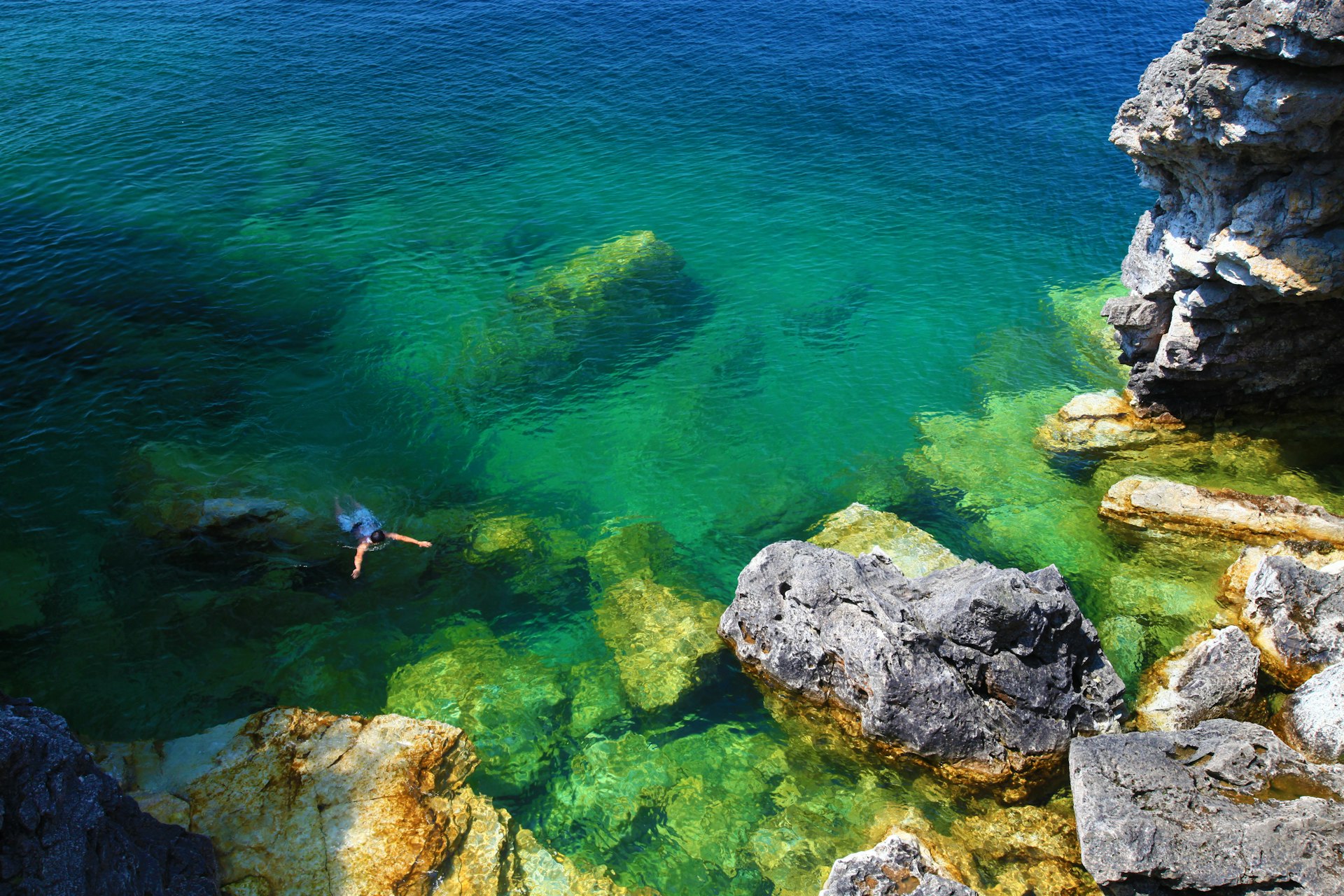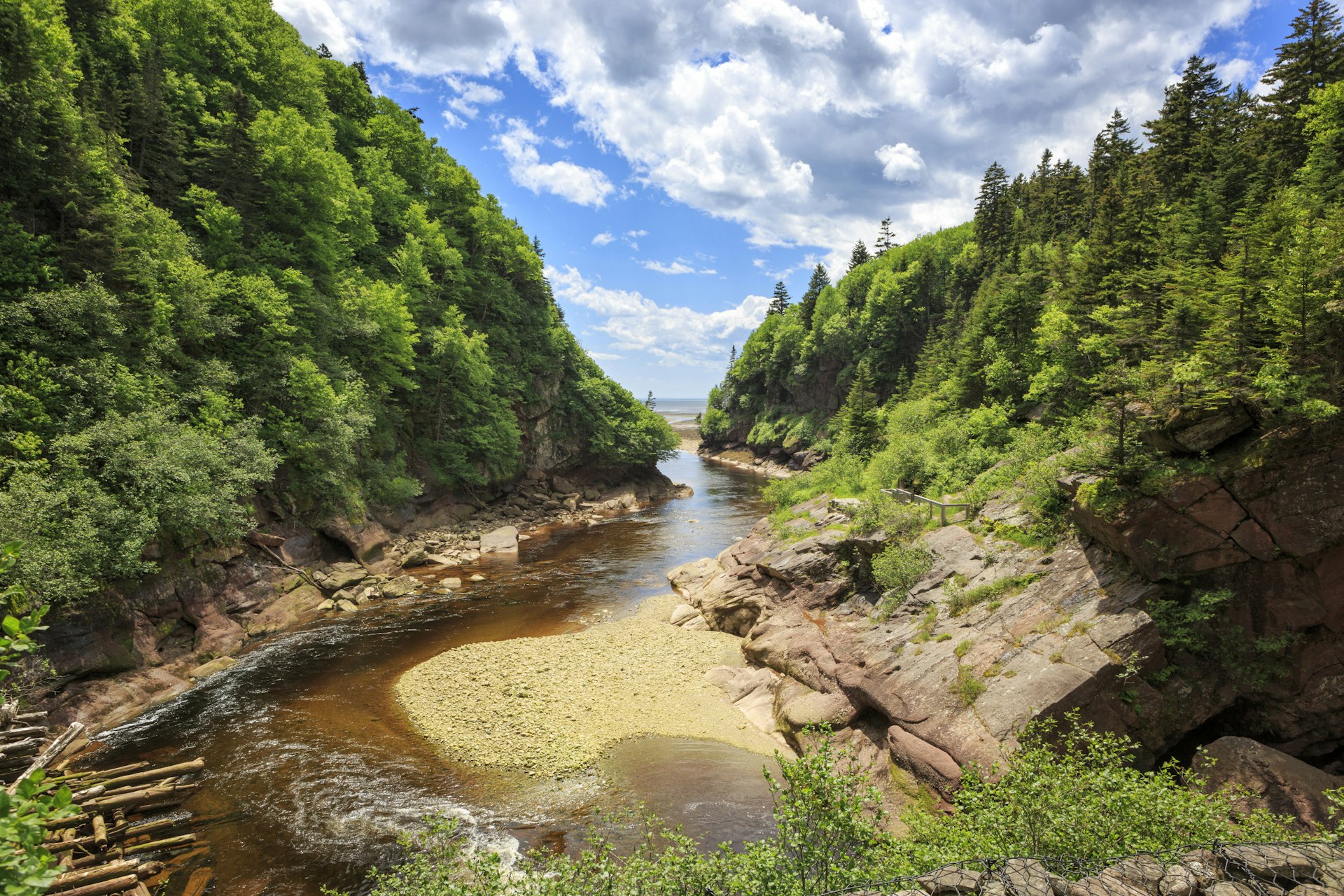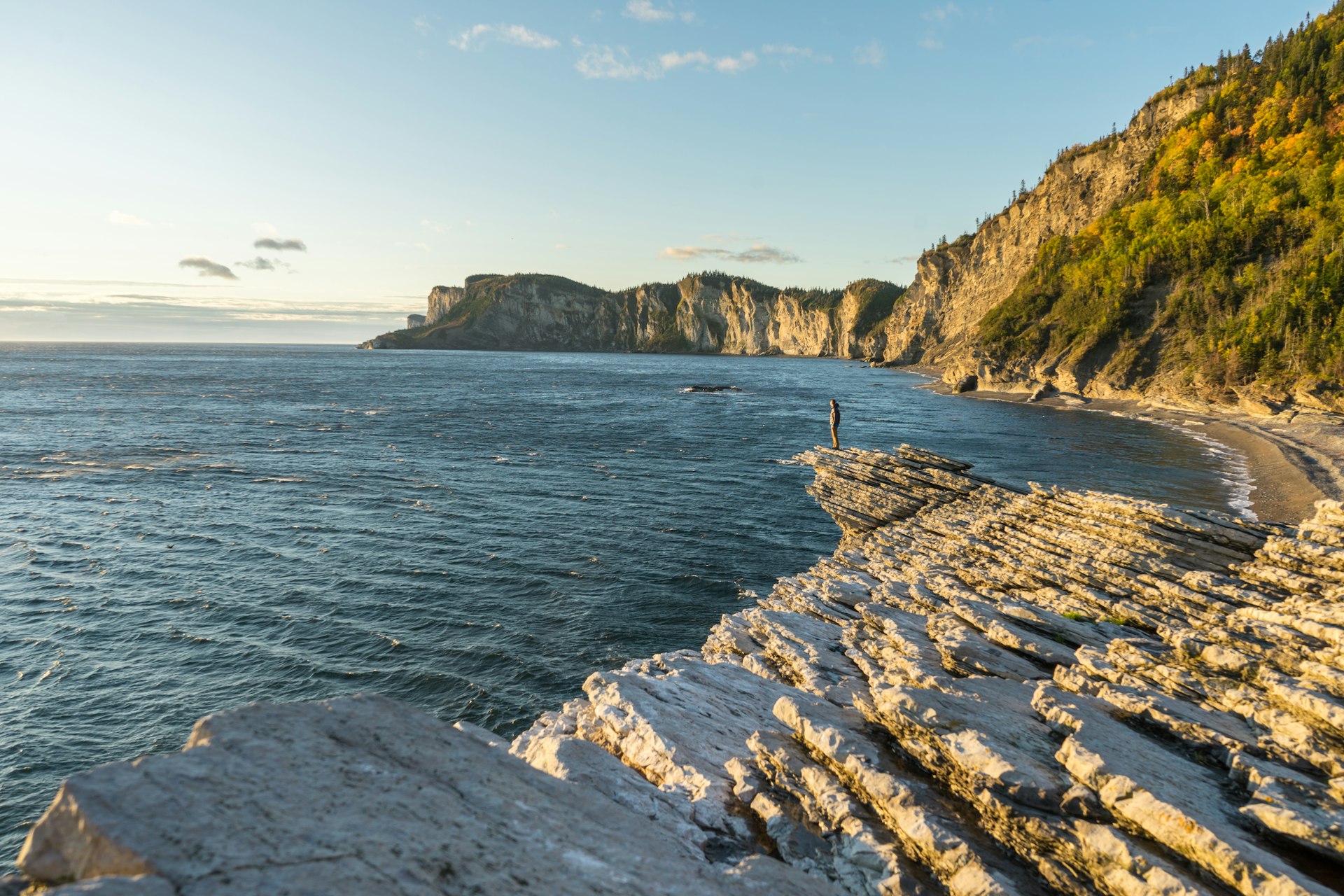In the battle to safeguard the planet’s endangered ecosystems, Canada is a global leader. Some of the world’s oldest, best managed, and biodiverse national parks reside north of the 49th parallel, collected under the umbrella of Parks Canada, a growing network of nearly 50 parks inaugurated since 1911.
The interconnecting Rocky Mountain parks – with their big fauna and brawny mountains – are emblematic of the nation and recognized by UNESCO. Other enclaves have strong cultural affiliations or focus on protecting specific birds and animals. Several parks in the territories are so vast and remote that they only receive a handful of annual visitors.
Whatever your preference, you haven’t really understood Canada until you’ve visited at least one of them.
1. Banff, Alberta
Best national park to access stunning views with ease
The world’s third oldest national park is an integral piece of Canadian history and an essential introduction to the glories of the Rocky Mountains. Banff is where tourism in Canada first took root in the 1880s inspired by the exploitation of a natural hot springs and the construction of the cross-continental railway.
The springs still do brisk business but have since been joined by a litany of other attractions, from a mountainside gondola to a chateau-esque hotel overlooking the robin-egg blue waters of Lake Louise.
Due to its early foundation, Banff is more heavily developed than newer Canadian parks and remains the country’s most-visited protected area. There’s a townsite, three ski areas and an abundance of hotels and restaurants. However, its perceived “commercialization” is partly illusionary. One of Banff’s best assets is the thin line it draws between the civilized and the wild. One minute you could be enjoying afternoon tea in the grandiose Fairmont Banff Springs Hotel, the next you might be sharing a mountain trail with bears and wondering where you fit into the food chain.

2. Bruce Peninsula, Ontario
Best for water activities from kayaking to freshwater scuba diving
Almost 300 miles northwest of Toronto, the Bruce peninsula consists of a limestone outcrop at the northern end of the Niagara Escarpment that juts out into the Great Lakes separating the cooler waters of Georgian Bay from warmer Lake Huron. The finger-like peninsula’s craggy shorelines and green woodlands shelter ancient cedars and rare orchids and are intersected by a short shore-hugging section of the 497-mile (800km) Bruce Trail, Canada’s oldest and longest-marked hiking route.
While the national park itself is not large, it squeezes in a lot of attractions into its 59 sq miles (154 sq km). Many are water-based. There’s an ethereal “grotto” (water-filled cave) to explore, plentiful kayaking opportunities and ample chances to swim in either warm Lake Huron, or cold but clear Georgian Bay.
The quaint town of Tobermory at the peninsula’s tip is ground zero for freshwater scuba diving in the adjacent Fathom Five National Marine Park, a treasure trove of shipwrecks.

3. Gros Morne, Newfoundland
Best national park for geological exploration
Newfoundland’s finest park is as exciting to geologists as it is to tourists. Students of plate tectonics and continental drift can augment their knowledge uncovering the topography of the barren “Tablelands,” an eerie flattop massif that features exposed rock from deep within the earth’s mantle. It’s like looking at Planet Earth without its clothes on.
A PhD in geology is not required to absorb the majesty of Gros Morne’s deep-cut fjords, lonely headlands, sheer cliffs, and 2000ft-drop (610m) waterfalls. Whales breach in the surrounding seas and shipwrecks and beaches dot the coast. If you’re searching for a one-off, all-encompassing park experience, it’s a toss up between hiking the harsh 10-mile (16km) Gros Morne Mountain Trail or taking a bracing boat tour of Western Brook Pond, a land-locked fjord with billion-year-old cliffs.

4. Fundy, New Brunswick
Best national park for beachcombing
If you’ve ever wondered what it might be like to walk across an ocean floor littered with marine life and debris, Fundy will answer most of your questions. New Brunswick’s oldest national park, established in 1948, is famous for the world’s highest tides. When the sea water recedes, the broad beaches reveal mudflats, rock pools, colonies of crustaceans, and other little-seen ocean secrets. Stick around for a few hours to witness the tide turn and the water begin its rapid rise.
Beyond a shoreline backed by irregularly eroded sandstone cliffs, the heavily-wooded park is dotted with pretty waterfalls and braided with trails suited to hiking and biking. Small pockets of civilization provide temporary comfort among the roughshod natural exhibits. You can swing a nine-iron on a golf course, stay at a retro 1950s motel, and swim in a heated outdoor saltwater pool that provides a milder alternative to the chilly ocean.
5. Jasper, Alberta
Best national park for watching wildlife and night-sky gazing
Banff’s non-identical twin shares many similarities with its southern neighbor. It has a small townsite, a gondola to the top of a nearby mountain (The Whistlers) and a spirit-reviving hot springs. But Jasper is larger, less-visited and wilder than more developed Banff.
Seeing big fauna here is almost guaranteed rather than a possibility. Elks graze on railway tracks, bears poke their noses around alpine meadows, and wolves and cougar occasionally frequent the park’s central valleys in the winter.
Lured by the wilderness, Jasper attracts legions of DIY travelers to its rustic hostels and hike- or ski-in backcountry lodges. In the last decade, the park has added another string to its bow, establishing itself as the world’s second-largest dark sky preserve with an unusual array of star-gazing and astronomical activities.

6. Pacific Rim, British Columbia
Best park for surfing and sunsets
British Columbia has seven national parks, more than any other province, but its most symbolic and unique protected space is, arguably, Pacific Rim.
A narrow but dramatic strip of wave-whipped beaches, brooding forests, and weather-beaten sea-stacks on the west coast of Vancouver Island, the park is split into three units which are usually visited separately. The Broken Group Islands Unit in Barkley Sound is a wilderness archipelago accessible on multi-day kayaking excursions or shorter boat trips.
The largely road-less West Coast Trail Unit to the south is crisscrossed by one of the most famous long-distance trails in Canada.
More accessible and attracting 95% of the visitors is the northern Long Beach Unit, bookended between the two mellow tourist towns of Tofino and Ucluelet and revered for its surf beaches and burnt orange Pacific sunsets.

7. Grasslands, Saskatchewan
Best national park for prairies
The newer of Saskatchewan’s two national parks, Grasslands is a wild and lonely sea of grass and prairie where treeless hills meet big skies. Anchored by an informative visitor center located in the tiny settlement of Val Marie, the park’s harsh, semi-arid landscapes are the habitat for two important animal species: black-tailed prairie dogs and plains bison. The latter were successfully reintroduced into the park in 2005.
The easiest way to see both critters is on the self-guided Grassland Ecotour Scenic Drive which incorporates seven points of interests along its 50-mile (80km) course including old homesteader cabins, flat-topped buttes and a couple of short interpretive walks.
8. Cape Breton Highlands, Nova Scotia
Best park for a scenic drive
Road-tripping is how most people absorb the primordial land-meets-ocean scenery of Cape Breton courtesy of the Cabot Trail Scenic Travelway, a 185-mile-long (298km) “ring road” that circumnavigates the island’s northern reaches dipping into tiny Acadian fishing villages en route. One third of the road passes along the edge of this national park, inaugurated in 1936 as the first park in Atlantic Canada.
Guarding dramatic highland scenery, steep cliffs and a tundra-esque plateau, Cape Breton is a superb place for hiking; the park’s most famous route is the 5-mile (8.2km) round-trip Skyline Trail from where you can look down on sea, headlands and the distant Cabot Trail with its cars reduced to tiny toys. The park also supports a healthy moose population, logging an estimated 3000 of these solitude-seeking ungulates.

9. Forillon, Québec
Best park for coastal hikes
Sticking out into the Gulf of St Lawrence on the eastern extremity of Québec province, Forillon covers the crumpled crests of the Gaspé Peninsula. Here, mountains plunge directly into the choppy ocean and rugged sea cliffs stand sentinel over spouting whales. There’s an elemental, end-of-the-continent feel on the precipitous north coast where cliff-top trails are well ventilated by blustery winds. The south coast is more sheltered and secluded harboring beaches and salt marshes where rare ringlet butterflies thrive. While birds and sea mammals dominate the coastal wildlife, porcupine, deer, moose, foxes, and bears inhabit the forested slopes of the park’s interior.
Lending this wild domain a more human feel is a solar-powered lighthouse at the northeastern-most tip of the peninsula, and a WW2 military battery built to counter the German U-Boat threat in 1942.

10. Kluane, Yukon
Best park for wilderness
Canada’s territories protect a baker’s dozen of vast, barely-touched national parks, but access is often difficult and expensive. If you’re keen on visiting one of them, fill up a four-wheel drive with gas and drive to Kluane in the Yukon, an imposing “empire of mountain and ice” that’s home to Canada’s highest peak, Mt Logan (19550ft/5959m), and sits flush up against humongous Wrangell-St Elias National Park in Alaska to form one of the largest protected wilderness areas in the world.
You can explore the cusp of the park and glimpse a few of its supersized wonders from the Alaska and Haines Highways starting just north of the BC–Yukon border. Nearly two dozen hikes lead off a 109-mile (175km) stretch of the road. Some are one-hour rambles, others are highly-advanced multi-day adventures, none of them penetrate the true heart of the park, an extreme backcountry of giant icefields, remote unclimbed mountains, and majestic grizzly bears.
Keep planning your trip to Canada:
Know these top tips before you hit the road.
Save this guide for the best places to visit in Canada.
Traveling on a budget? We have tips for you.
Check whether you need a visa to visit Canada.
And now get planning the ultimate Canadian road trip.
